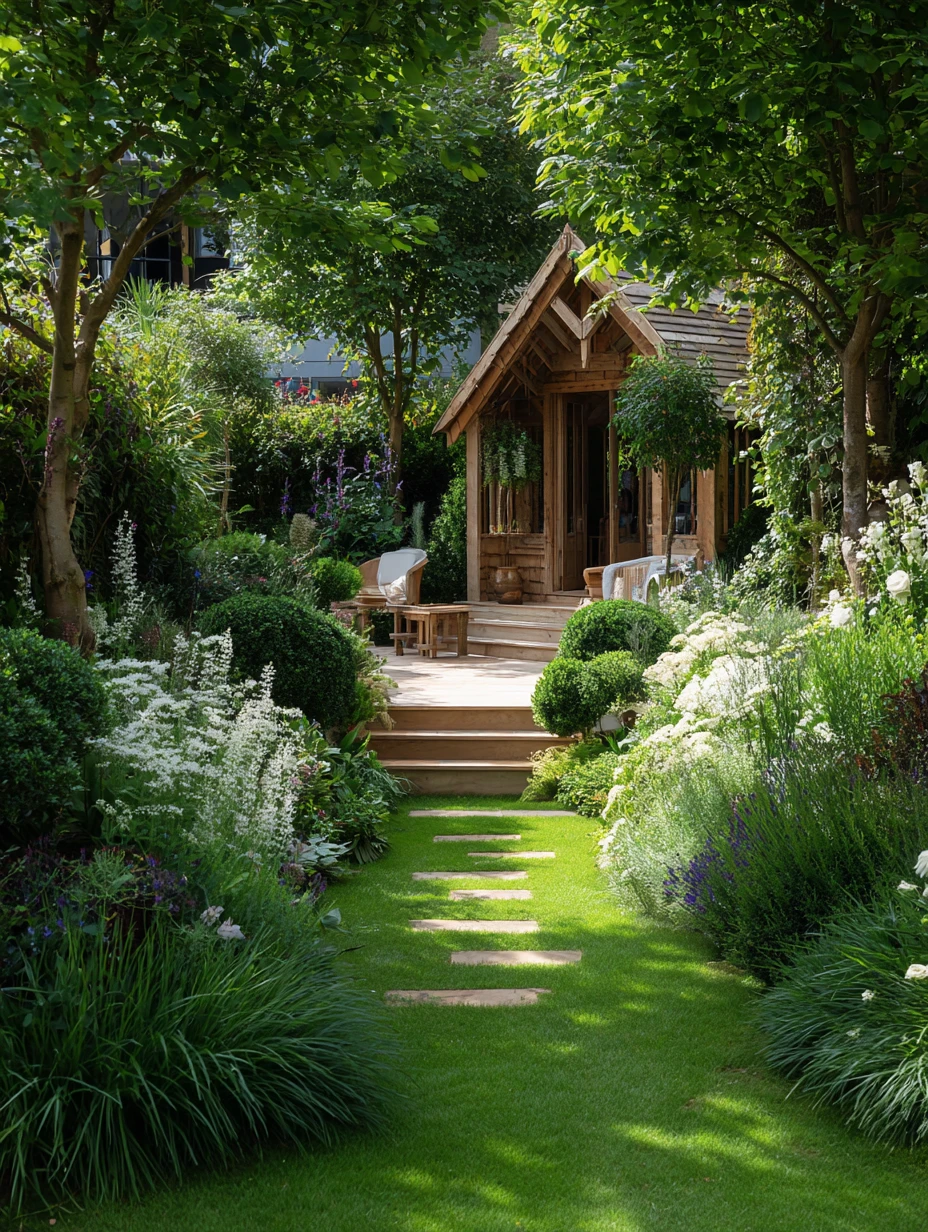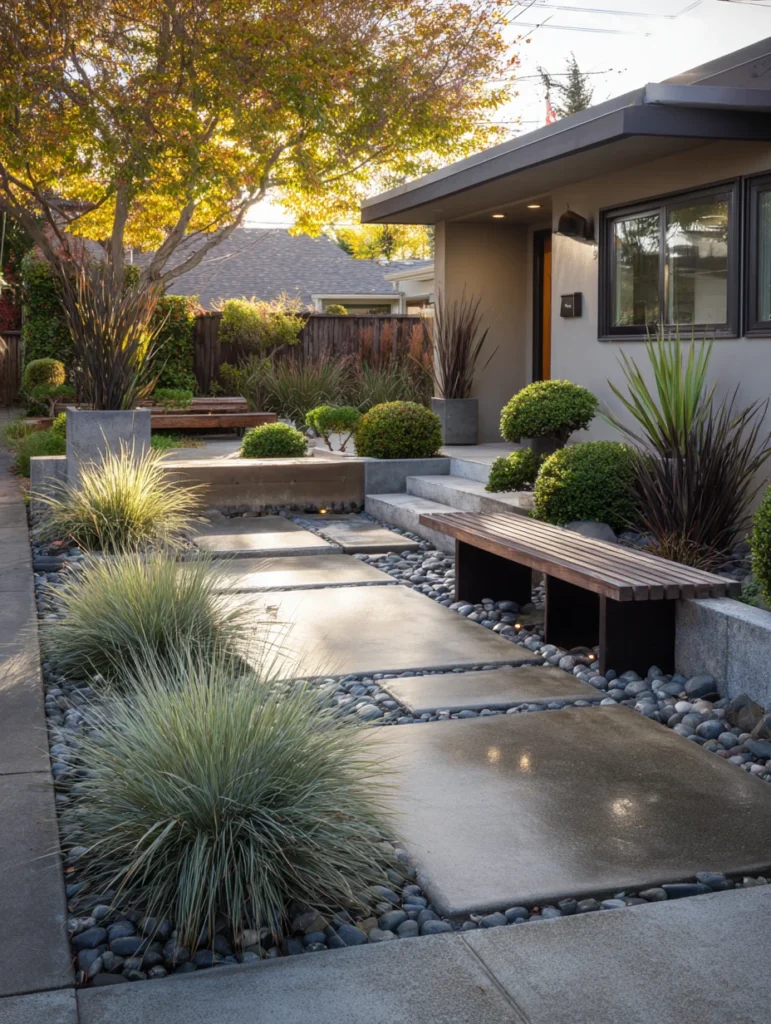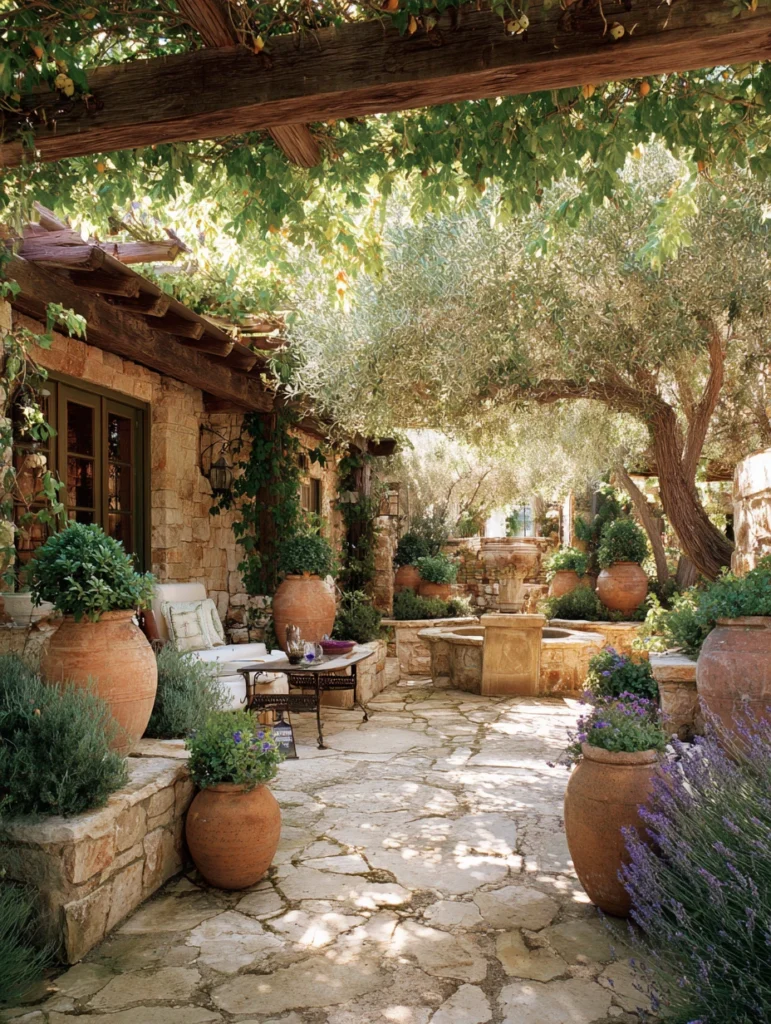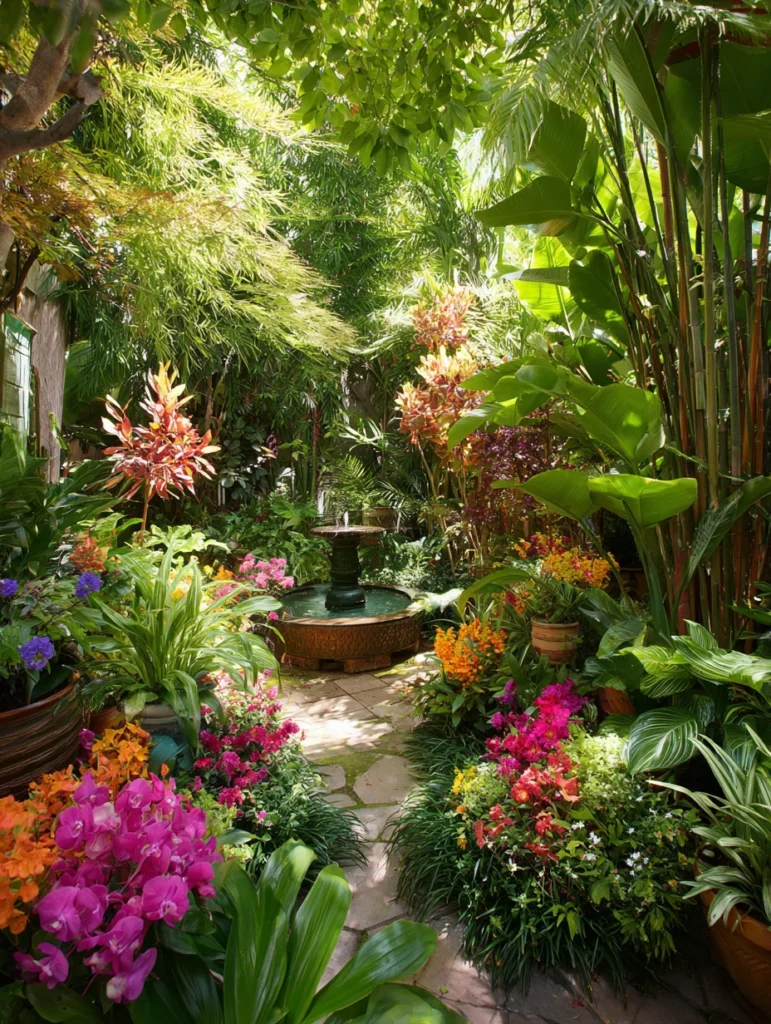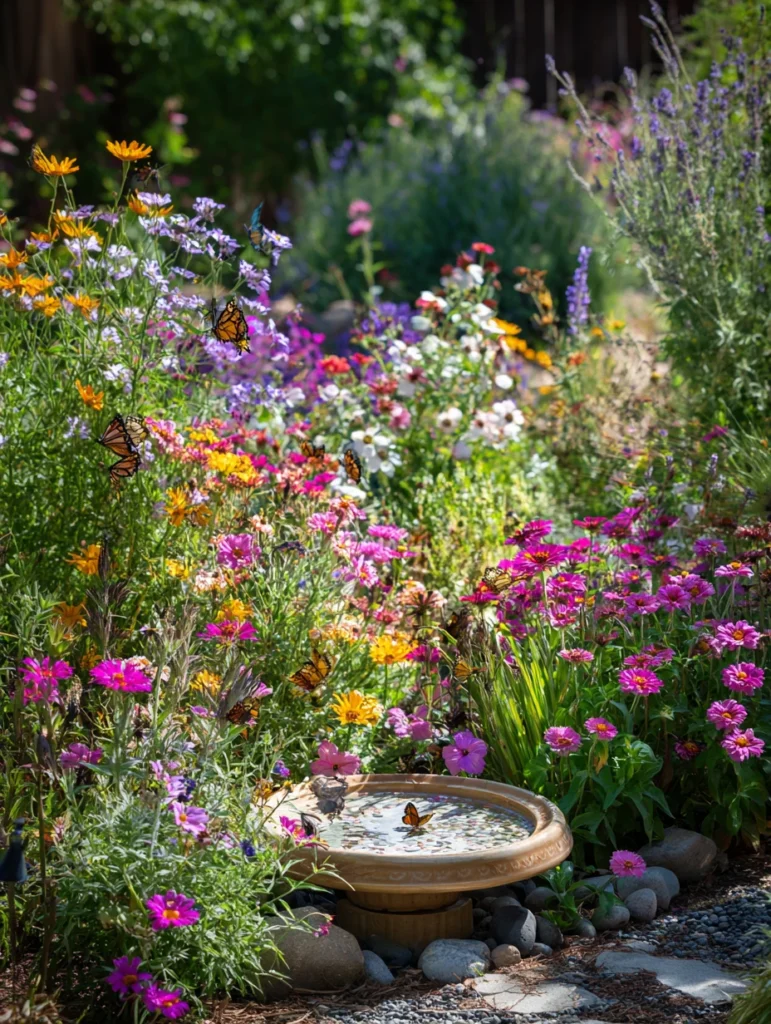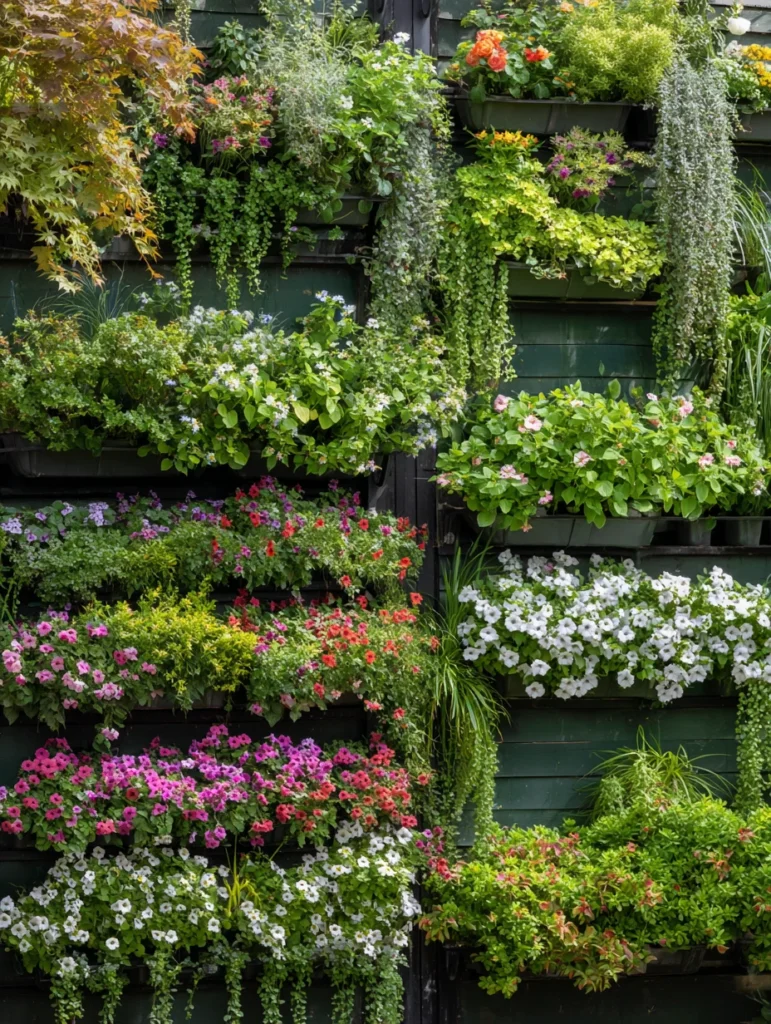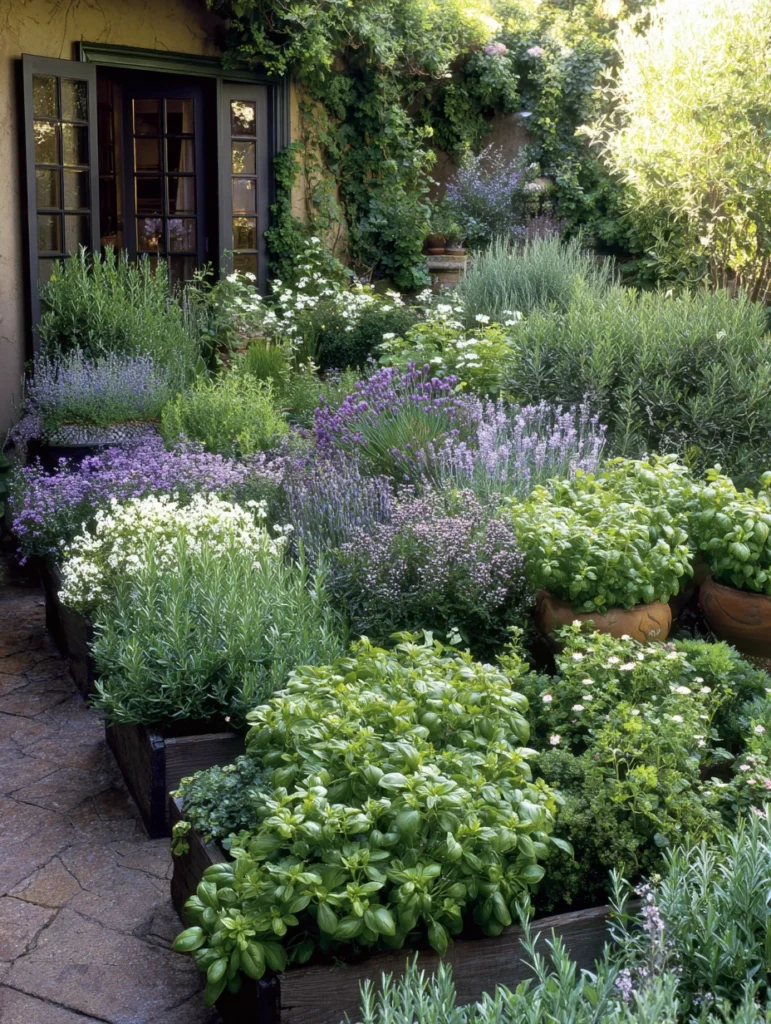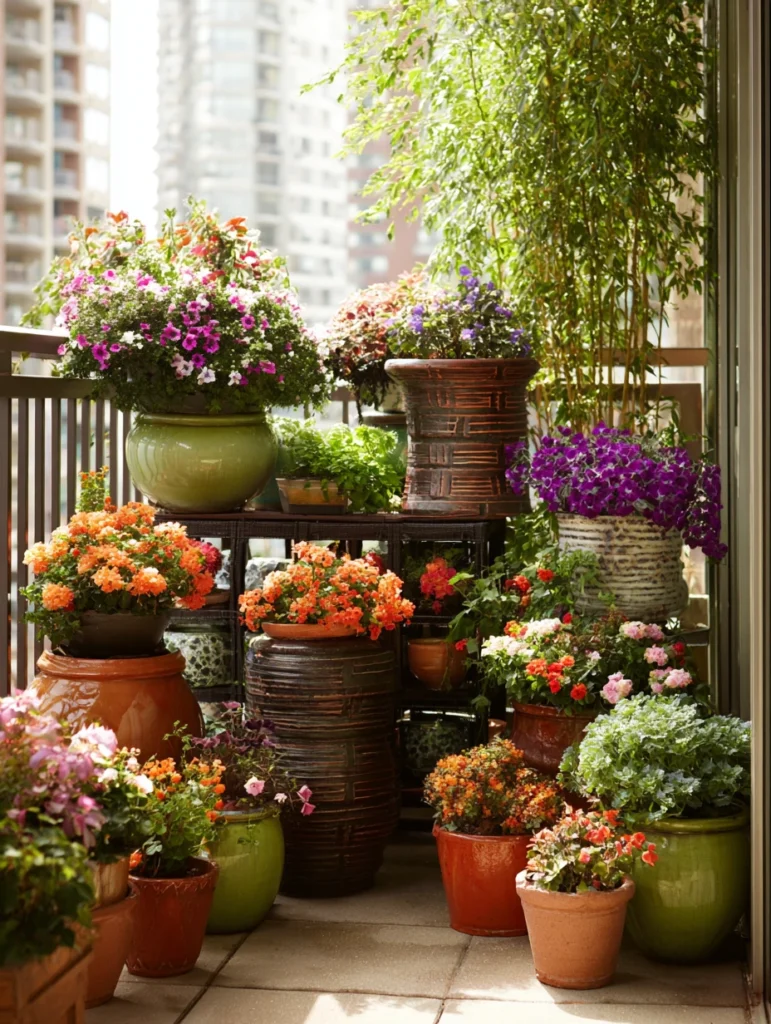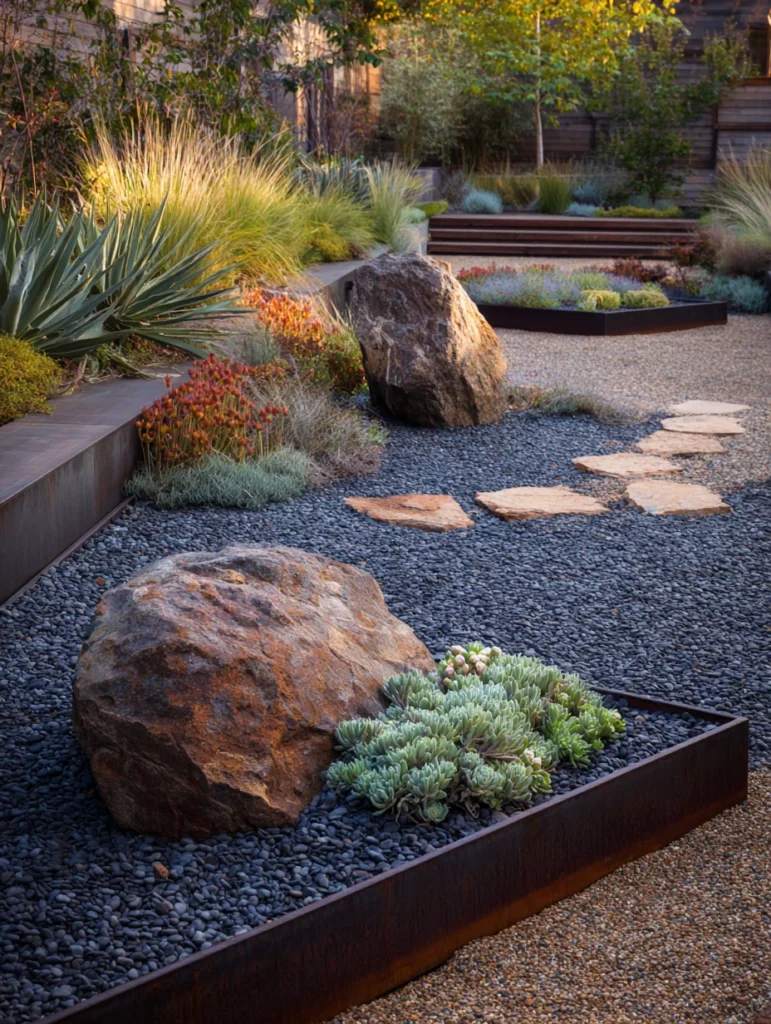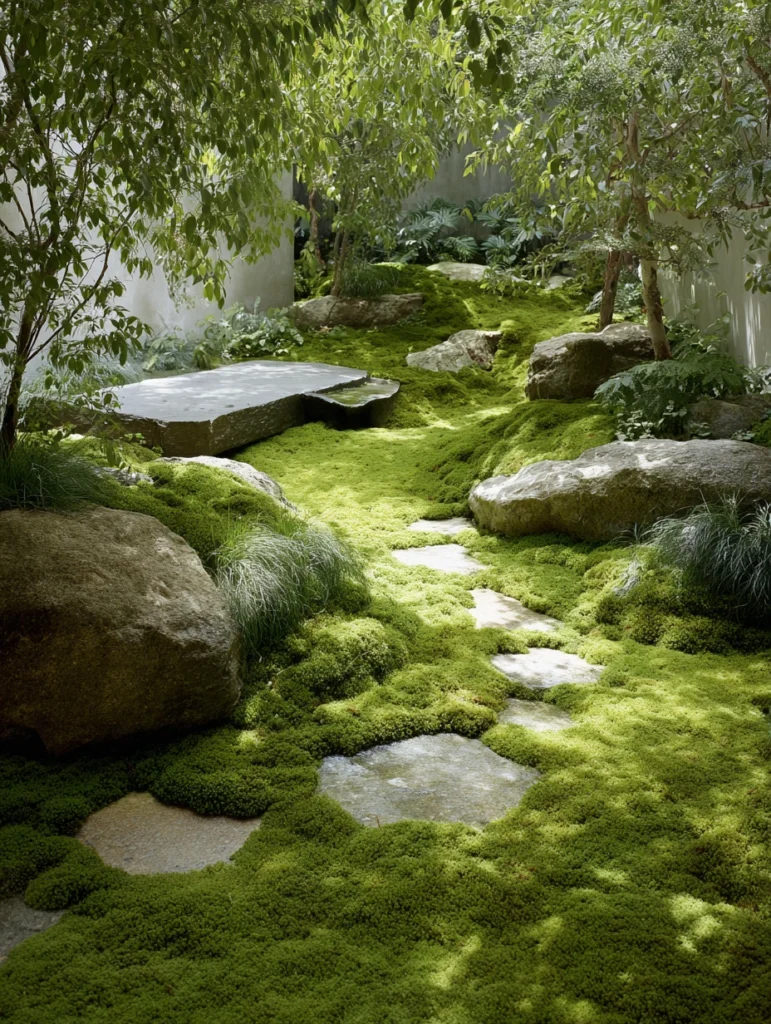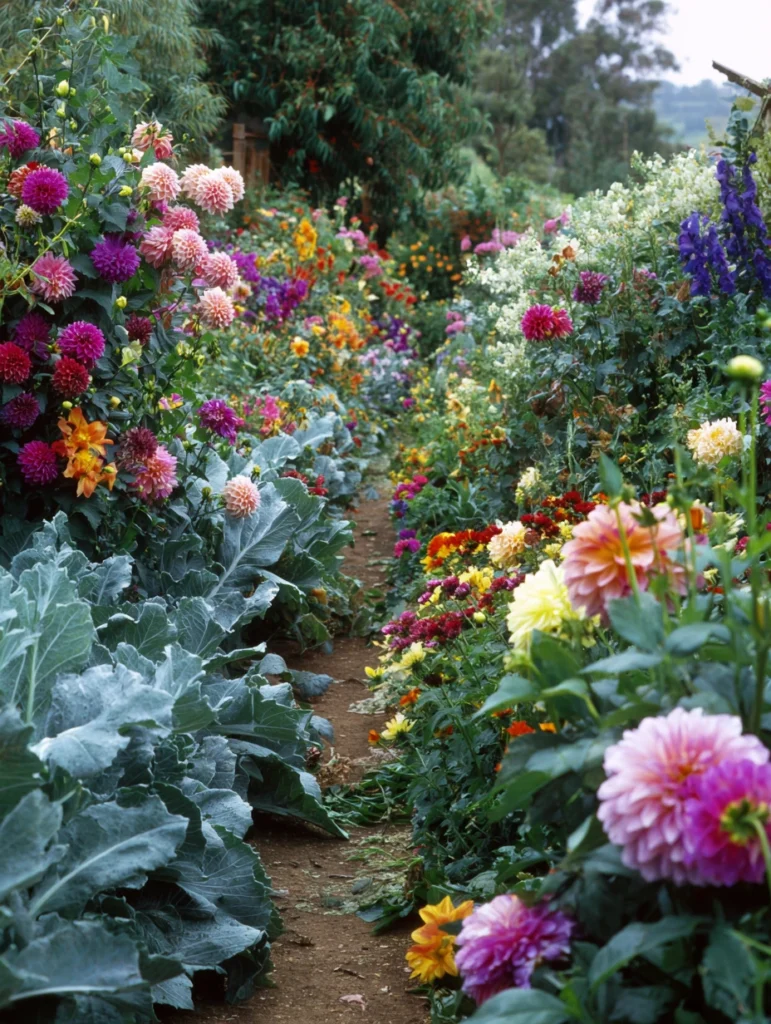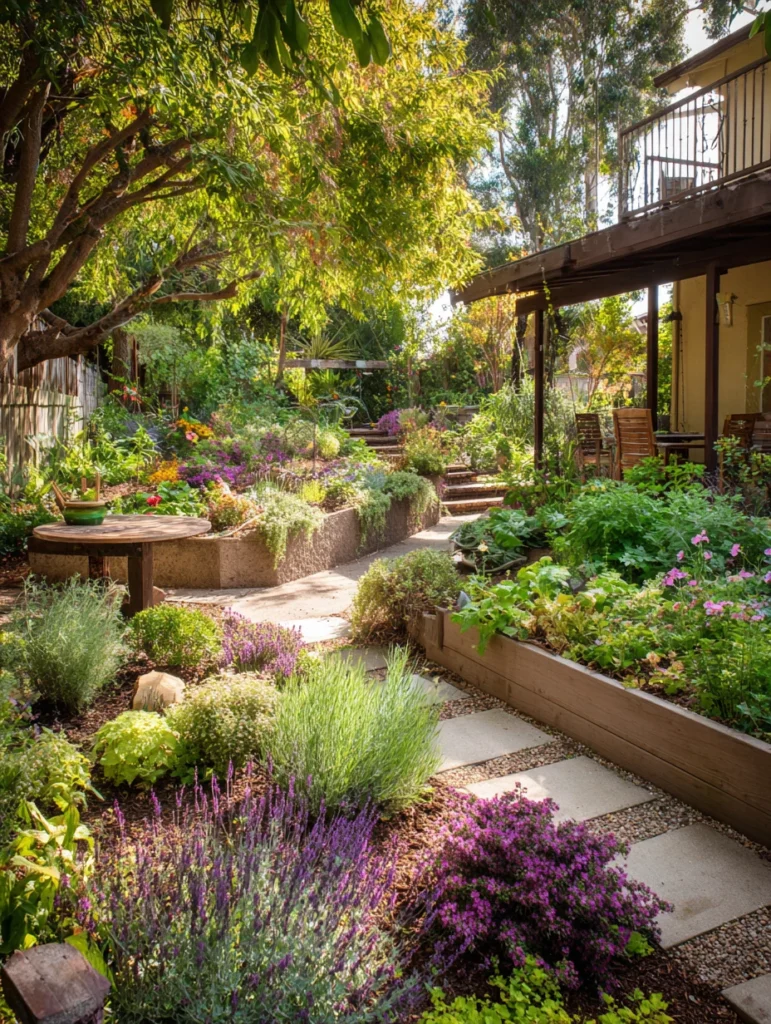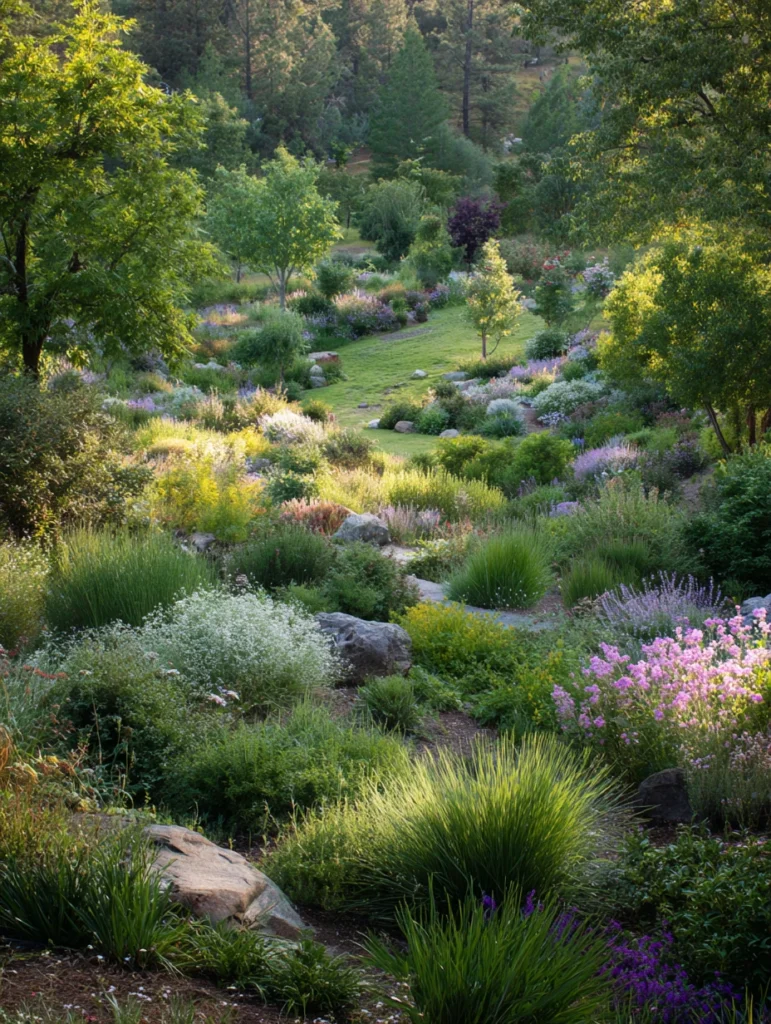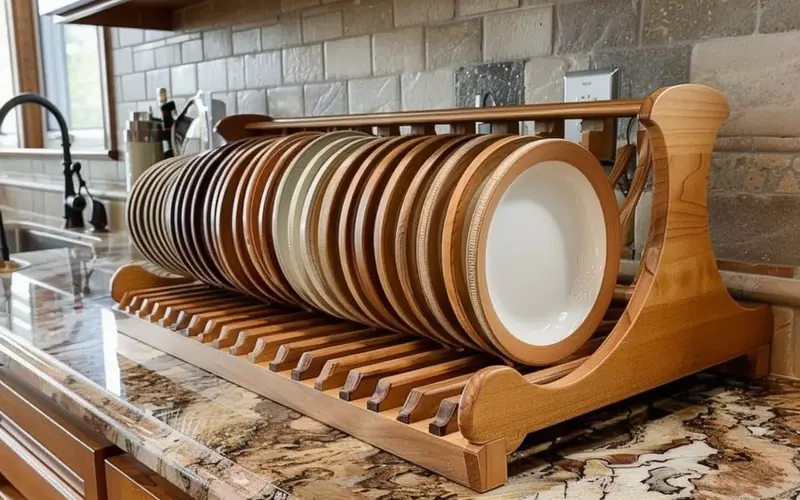Your garden is basically your outdoor living room, right? It’s where you spend lazy afternoons, host friends, and honestly, just escape from the chaos of everyday life. But here’s the thing – a beautiful garden doesn’t happen by accident. It takes a little thought, some creativity, and yes, a bit of planning.
Whether you’re working with a small balcony or a sprawling backyard, these 21 ideas will help you create an outdoor space that feels both stunning and genuinely your own. And the best part? Most of these transformations won’t break the bank. Let’s dig in and discover how to turn that neglected corner into something you’ll actually want to spend time in.
1. Create a Cozy Cottage Garden Vibe
The Charm Factor: A cottage garden thrives on that romantic, slightly overgrown-but-intentional look. Layer flowers, herbs, and vegetables in a way that feels organic yet intentional. Think of climbing roses, hollyhocks, daisies, and fragrant lavender, all packed together with colors that blend naturally. The beauty here is that cottage gardens forgive imperfection – mismatched containers and uneven spacing actually add character.
Planting Strategy: Start with tall plants, such as delphiniums, in the back, layer mid-height roses and salvias in the middle, and finish with low-growing flowers, like pansies, in the front. Scatter herbs throughout for both beauty and functionality. Add climbing vines to arbors and scatter quirky accessories, such as vintage watering cans and weathered garden stools, to enhance the aesthetic.
Product Spotlight: The Raised Garden Bed Kit with Soil gives you a defined space to start your cottage layout, while the Vintage Metal Garden Arbor provides the perfect structure for climbing roses and clematis.
Read More: 21 Inspiring Vegetable Garden Design Ideas
2. Design a Modern Minimalist Garden
Less is Genuinely More: Minimalist gardens strip away fuss and focus on clean lines and purposeful spacing. Choose three to five plant types repeated throughout in groups rather than scattered randomly. Consider incorporating architectural plants, such as ornamental grasses, sculpted topiary, and sleek evergreens, in shades of green and grey. Every element earns its place; nothing’s there just for decoration.
Structural Elements: Incorporate simple wooden benches or modern metal chairs paired with clean-lined planters in neutral tones. Use gravel or mulch in muted colors to define planting areas intentionally. Water features, such as simple fountains or still pools, add movement without creating visual chaos. Install subtle lighting to highlight key plants and create an evening ambiance that emphasizes the minimalist philosophy.
Product Spotlight: The Modern Stainless Steel Raised Garden Planters create that sleek, architectural look, and the Linear LED Garden Lights add sophisticated illumination without overwhelming the space.
Read More: 21 Small Zen Garden Ideas for a Tranquil Home
3. Build a Japanese Zen Garden Sanctuary
Philosophy Meets Landscape: Japanese gardens strike a balance between harmony and reflection through the careful selection of elements. Every component carries purpose and meaning – there’s no wasted space or decoration. Work with natural stone, gravel, water elements, and plants like Japanese maples and bamboo. Create visual calm through thoughtful composition that invites meditation and slows you down.
Design Principles: Incorporate a raked gravel area that represents water, featuring meditative ripple patterns. Place rocks strategically in odd numbers for natural aesthetics. Plant Japanese maples for delicate canopy coverage, add moss between stepping stones for softness, and include bamboo screens for privacy. Install a simple stone lantern as a focal point that grounds the entire design.
Product Spotlight: The Japanese Garden Tool Set, featuring hand pruners and a Rake, helps maintain a precise, manicured look, while the Decorative Stone Lantern serves as an authentic focal point for your garden.
Read More: 21 Cottage Garden Ideas for a Whimsical Space
4. Transform Your Space into a Mediterranean Garden Oasis
Sun, Stone, and Sensuality: Mediterranean gardens celebrate warmth and sunshine with drought-tolerant plants like lavender, rosemary, olive trees, and oleander. Stone pathways, gravel, and terracotta pots create that warm, earthy foundation. Colors lean toward creams, golds, burnt oranges, and deep purples that evoke that sun-baked Mediterranean atmosphere throughout your space.
Hardscape and Materials: Use rustic stone pavers or gravel for pathways and terracotta pots for planting. Create shaded lounging areas beneath pergolas draped with grapevines or jasmine. Install a fountain as a cooling focal point – the sound of water adds sensory richness. Mix in citrus trees, figs, and herbs like oregano and thyme for both beauty and culinary benefits.
Product Spotlight: The Terracotta Planter Set in Various Sizes captures authentic Mediterranean aesthetics, and the Wooden Garden Pergola Kit provides structure for sun-dappled relaxation zones.
Read More: How to Design a Container Garden for Your Flowers
5. Craft a Tropical Garden Paradise
Bring the Jungle Home: Tropical gardens celebrate abundance and vibrant colors with layered planting at different heights. Think bold foliage plants, such as elephant ears and ferns, paired with vibrant colors like shocking pinks, fiery oranges, and deep purples. This style thrives on a lush, enclosed atmosphere with moisture-rich plants, creating the vacation feel you crave year-round.
Layering and Texture: Create layers by starting with tall plants, such as bamboo, in the back, moving to medium-height flowering plants in the middle, and finishing with ground covers in the front. Include moisture-loving plants and water features, such as fountains or small ponds, to create a serene atmosphere. Add tropical flowers like hibiscus and bird of paradise in vibrant colors scattered throughout for that abundant, unapologetic beauty.
Product Spotlight: The Tropical Plant Potting Soil Mix ensures specimens thrive with proper drainage, while the Outdoor Misting System maintains humidity and creates an authentic tropical microclimate.
Read More: Amazing Herb Garden Ideas for Your Outdoor Oasis
6. Plant a Wild Wildflower Meadow
Nature’s Organized Chaos: Wildflower Meadows Celebrate Nature While Remaining Strategically Designed. This isn’t untended – it’s a curated selection of native wildflowers that creates that magical, slightly wild feeling. Sow wildflower seeds in spring or fall, and you’ll get blooms in vibrant, unexpected combinations that attract pollinators and create stunning visual interest throughout seasons.
Seed and Soil Preparation: Clear existing grass and weeds, loosen soil, and scatter wildflower seed mix designed for your climate zone. Water regularly until established, then let nature take over – minimal maintenance is one of the joys here. Choose mixes containing cornflowers, poppies, and Queen Anne’s lace for a naturally beautiful meadow look that changes with the seasons.
Product Spotlight: The Native Wildflower Seed Mix delivers region-appropriate blooms for your climate, and the Garden Soil Preparation Tool Set makes clearing and preparing your meadow space efficient and easy.
Read More: 21 Corner Garden Ideas to Transform Your Backyard
7. Create a Raised Bed Vegetable Garden
Functional Beauty: Raised bed gardens combine aesthetics with productivity, letting you grow fresh vegetables while adding structure to your garden design. Elevated beds warm up faster in the spring, drain better, and reduce bending – a win-win-win. You control soil quality completely, which means healthier plants and better harvests. Additionally, raised beds have a more intentional and organized appearance, instantly upgrading your garden’s look.
Layout and Planting: Arrange raised beds in geometric patterns or linear formations to create a visually striking impact. Plant taller crops, such as tomatoes, in the back, medium plants, like peppers, in the middle, and low-growing plants, like lettuce, in the front. Add pathways between beds using gravel or stepping stones. Include some flowering plants among vegetables to attract pollinators and add color alongside your edibles.
Product Spotlight: The Composite Raised Garden Bed Kit requires minimal maintenance and lasts for years, while the Drip Irrigation System ensures consistent watering with minimal daily effort.
Read More: Stunning Flower Bed Ideas for the Front of the House
8. Design a Butterfly and Pollinator Garden
Bring the Wings: Butterfly and Pollinator Gardens Attract Gorgeous Winged Visitors by Providing Nectar Sources and Host Plants. Choose flowering plants like milkweed, zinnias, coneflowers, and lavender that butterflies actually love. The garden becomes dynamic – you’re not just looking at plants, you’re watching living butterflies, bees, and hummingbirds interact with your space. This approach combines beauty with ecological purpose.
Plant Selection and Spacing: Plant in clusters of the same flower types so that insects can easily find food; scattered single plants can confuse them. Include plants that bloom at different times to provide nectar sources from spring through fall. Avoid pesticides altogether; butterflies and pollinators are sensitive to chemicals. Add shallow water sources, such as bird baths with pebbles, as landing spots where insects can safely drink.
Product Spotlight: The Butterfly and Pollinator Plant Bundle provides proven attractors in starter quantities, and the Shallow Ceramic Bee Bath offers safe water access while serving as a beautiful garden accent.
Read More: 17 Garden Ideas for Small Spaces and Maximum Yield
9. Build a Vertical Wall Garden
Think Upward: Vertical gardens maximize space effectively, especially when working with limited square footage. Wall-mounted planters, trellises, and hanging baskets transform bare walls into living art. This approach works indoors or outdoors, on fences or walls, creating instant visual interest and greenery where you might otherwise have space. Vertical gardens are also surprisingly low-maintenance once established.
Installation and Plant Selection: Install sturdy brackets, trellises, or wall-mounted planter systems securely to ensure stability and prevent movement. Choose plants suited to vertical growing – trailing varieties like pothos and sedums work beautifully, as do flowering plants like petunias. Ensure proper watering systems since vertical gardens dry faster than ground-level plantings. Mix different heights, textures, and colors for visual richness that draws the eye upward.
Product Spotlight: The Vertical Garden Wall Planter System mounts securely and elegantly holds multiple plants, while the Automatic Drip Watering Kit ensures consistent moisture for vertical installations.
Read More: How To Create a Beautiful Rose Garden To Inspire You
10. Create a Fragrant Herb Garden Sanctuary
Smell the Difference: Herb gardens engage your senses in ways ornamental gardens sometimes miss. Brushing past rosemary, touching basil leaves, and smelling lavender connect you to your garden on a deeper level. A dedicated herb garden supplies your kitchen while looking beautiful and attracting beneficial insects. Most herbs are incredibly low-maintenance, forgiving, and produce prolifically once established.
Design and Maintenance: Plant herbs in raised beds or containers near your kitchen door for convenient harvesting. Group Mediterranean herbs like rosemary, thyme, and oregano together, as they thrive in similar conditions. Keep water-loving herbs, such as basil and mint, in separate or contained areas. Pinch back regularly to encourage bushiness and prevent flowering until you’re ready. Harvest frequently – this actually enables more growth.
Product Spotlight: The Premium Herb Garden Starter Kit includes seeds and soil for 12 varieties, and the Stainless Steel Herb Harvesting Tool Set makes collecting fresh herbs efficient and precise.
Read More: 21 Japanese Garden Ideas for Serene Outdoor Spaces
11. Design a Small Urban Container Garden
Immense Beauty in Small Spaces: Container gardens work well in a variety of spaces, including balconies, patios, stoops, and even tiny yards. Grouping containers creates a visual impact and allows you to change the arrangement with the seasons. Different pot sizes, colors, and textures add dimension while plants provide the color and life. Container gardening is forgiving; if something doesn’t work, you rearrange and try again without permanent consequences.
Container Selection and Arrangement: Mix pot sizes – large statement pots with smaller accent pots grouped. Choose materials that complement your space: terracotta for a rustic look, glazed ceramic for a modern feel, or fabric pots for a contemporary style. Ensure drainage holes in every pot. Arrange pots at varying heights using plant stands or upturned containers to create visual interest. Rotate seasonal plants to keep the display fresh and exciting throughout the year.
Product Spotlight: The Premium Container Potting Mix ensures excellent drainage and nutrition for potted plants, while the Tiered Plant Stand lets you maximize vertical space in compact areas.
Read More: 21 Stunning Mediterranean Garden Ideas To Inspire You
12. Build a Shade Garden Oasis
Embrace the Shadow: Shade gardens prove that you don’t need blazing sun for beauty. Shade-loving plants, such as hostas, ferns, coral bells, and Japanese maples, create lush, cool environments. These gardens feel peaceful and contemplative – perfect for hot climates where afternoon shade becomes essential. Shade gardens also open possibilities for plants that would scorch in full sun.
Plant Combinations and Textures: Layer plants with varying leaf shapes and colors – large hostas with delicate ferns, colorful coral bells with dark evergreens. Add shade-tolerant flowers like hellebores, astilbe, and impatiens for color that doesn’t require direct sunlight. Utilize hardscape elements, such as stepping stones, benches, and pathways, to define the space and create distinct destination points. Mulch generously to retain moisture that shade plants prefer.
Product Spotlight: The Shade Garden Plant Collection features proven shade-tolerant plants that establish quickly. The Shade Cloth with Installation Hardware allows you to create instant dappled light conditions where needed.
Read More: How To Create an English Cottage Garden for Your Flowers
13. Create a Rock and Alpine Garden
Sculpted Beauty: Rock gardens celebrate stones as design elements, not just filler. Alpine plants thrive in well-draining, rocky soil that mimics the conditions of mountain environments. This style works brilliantly if you have slope challenges or poor soil – transform what others see as problems into stunning features. Rock gardens require less water than traditional gardens and look naturally beautiful with minimal maintenance.
Rock Placement and Plant Selection: Arrange rocks to create visual movement and naturally define planting pockets. Group rocks of similar color and size together rather than scattering randomly. Plant alpine varieties like sempervivums, sedums, and creeping thyme that thrive in shallow soil. Leave some bare rock visible – it’s part of the aesthetic. Add gravel pathways that echo the rocky theme.
Product Spotlight: The Alpine Plant Starter Set features hardy varieties ideally suited to rocky terrain, while the Landscape Rock and Stone Mix provides natural materials for creating an authentic alpine garden.
Read More: How To Create a Magical DIY Fairy Garden for Your Backyard
14. Design a Water Feature Garden
Beauty in Motion: Water features transform gardens into multisensory experiences – you hear, see, and feel the presence of water. Fountains, ponds, streams, and waterfalls add movement, reflect light, and create cooling effects. Water features attract wildlife and become focal points that draw the eye. Whether you choose a small tabletop fountain or an elaborate koi pond, water adds undeniable magic to outdoor spaces.
Feature Selection and Integration: Start small with a recirculating fountain if you’re uncertain- no pond construction is required. For larger installations, place water features where you can view them from inside the house. Surround water with plantings that echo natural habitats. Include seating nearby so you can actually enjoy the sights and sounds. Add lighting to highlight water features during evening hours when they become even more magical.
Product Spotlight: The Solar-Powered Recirculating Water Fountain requires no electrical wiring and provides peaceful water sounds instantly. At the same time, the Underwater LED Fountain Lights transform water features into evening focal points.
Read More: Urban Gardening Solutions: Creating a Small Patio Veggie Garden
15. Craft a Contemporary Gravel Garden
Sophisticated Simplicity: Gravel gardens feature a clean, architectural aesthetic, utilizing colored gravel as a primary design element. These gardens work beautifully with contemporary homes and complement minimalist design principles. Gravel provides excellent drainage for drought-tolerant plants, reduces weeds, and creates interesting texture and movement in light. This style reads expensive while remaining budget-friendly.
Gravel Selection and Planting: Choose gravel colors that complement your home’s exterior – charcoal, tan, white, or russet tones work beautifully. Create defined planting areas using metal edging or hardscape borders—Scatter drought-tolerant plants, such as ornamental grasses, sedums, and architectural shrubs, across the gravel. Use stepping stones for pathways. Add larger boulders as focal points that anchor the design and create visual interest.
Product Spotlight: The Decorative Landscape Gravel Mix offers sophisticated color and drainage properties, while the Metal Garden Edging Kit creates clean lines that define your planted areas.
16. Create a Japanese Moss Garden
Tranquil Green: Moss gardens offer serene beauty without the high maintenance of traditional gardens. Soft, velvety moss creates a living carpet that feels incredible underfoot, evoking the meditative atmosphere of a Japanese garden. Moss gardens thrive in shady, moist conditions, making them ideal for challenging areas where other plants struggle. These spaces feel naturally peaceful.
Growing and Maintenance: Prepare acidic, well-draining soil by adding peat moss or leaf mold. Transplant moss fragments and keep them consistently moist until they are established. Add rocks, stepping stones, and minimal plantings to avoid overwhelming the moss. Water regularly during dry spells. Rake gently to maintain texture and remove debris. Over time, moss spreads and fills in beautifully, requiring surprisingly little intervention once established.
Product Spotlight: The Live Moss Starter Kit includes established moss fragments ready to transplant, and the Acidic Soil Amendment Mix creates ideal growing conditions for moss establishment.
17. Design a Cutting Garden for Fresh Flowers
Flowers on Demand: Cutting gardens solve the eternal problem of wanting fresh flowers for your home without spending money at florists. You grow flowers specifically for cutting, allowing you to create stunning arrangements whenever you want. This garden is purely functional – appearance matters less than productivity. Watch your home transform with constantly changing fresh flower displays.
Planting Strategy: Grow abundant cutting flowers, such as dahlias, zinnias, cosmos, sunflowers, and gladiolus, in rows for easy harvesting and cutting. Include foliage plants like eucalyptus and dusty miller that add texture to arrangements. Plant succession crops every two weeks for continuous blooms throughout the season. Keep cutting tools sharp and always harvest in the early morning when stems hold the most water. Cut the stems at an angle and place them immediately in water.
Product Spotlight: The Flower Garden Seed Collection features proven cutting varieties in bulk quantities, while the Professional Floral Cutting Tool Set ensures clean cuts that significantly extend vase life.
18. Build a Sensory Garden for All Abilities
Garden for Everyone: Sensory gardens welcome all visitors by engaging their senses through touch, smell, sight, sound, and taste. Raised beds, accessible pathways, and sturdy benches accommodate a range of mobility needs. Fragrant plants, textured foliage, musical elements, and edible plants create rich experiences. These gardens prove that gardens belong to everyone, regardless of physical ability.
Accessible Design Elements: Install wide, smooth pathways without steps or steep slopes for wheelchair and walker access. Create raised beds at a comfortable working height, around 24-30 inches. Include benches with armrests for comfortable seating. Choose soft-textured plants, such as lamb’s ear and fuzzy catmint. Plant abundantly fragrant herbs and flowers. Add wind chimes or water features for auditory interest. Incorporate edibles throughout so visitors can taste as they explore.
Product Spotlight: The Accessible Raised Garden Bed System is designed for comfortable heights and widths to suit various gardening needs. The Outdoor Sensory Planting Kit features fragrant, textured, and edible varieties selected explicitly for multi-sensory gardens.
19. Create a Native Plant Garden Ecosystem
Support Local Wildlife: Native plant gardens support local ecosystems by providing food and habitat for birds, butterflies, and beneficial insects. These gardens typically require less water, fertilizer, and maintenance once they are established, as plants naturally thrive in local conditions. You’re creating a living ecosystem in your own yard – how cool is that? Native gardens often appear wild and natural, rather than manicured, which many people prefer.
Plant Selection and Planning: Research native plants suitable for your specific region and growing conditions; your local extension office offers excellent resources. Group plants by water needs – high, medium, and low moisture lovers. Create layers with trees, shrubs, perennials, and groundcovers. Plant densely to outcompete weeds. Avoid pesticides completely. Provide water sources during establishment, then let nature take over. You’ll observe an increase in wildlife as the ecosystem matures.
Product Spotlight: The Regional Native Plant Collection features species perfectly adapted to your local climate, and the Native Plant Identification and Care Guide ensures you’re planting and caring for them appropriately.
20. Design a Night Garden for Evening Enjoyment
Beauty After Sunset: Night Gardens Celebrate the Fact That You Use Your Garden During Evening Hours Too. White and pale flowers glow in moonlight and dusk, making evening spaces feel magical. Add lighting strategically to highlight key features and create a desired ambiance. Night gardens smell incredible – many fragrant flowers release stronger scents in the evening to attract night-blooming pollinators. This approach doubles your garden enjoyment.
Plant and Lighting Selection: Choose white and pale pink flowers, such as gardenias, moonflowers, and white roses, that glow in dim light—plant fragrant evening bloomers like jasmine and night-blooming cereus. Install landscape lighting to highlight focal points without creating harsh shadows. Add solar lights along pathways for safety and ambiance. Include seating where you can settle in at dusk.
Product Spotlight: The Solar LED Landscape Lighting Kit creates ambiance without the need for electrical wiring, and the Night-Blooming Fragrant Plant Collection offers spectacular evening interest and scent.
21. Build a Seasonal Rotation Garden
Year-Round Interest: Seasonal rotation gardens offer a constant change, preventing monotony. Plan spring bloomers, summer color explosions, fall foliage, and winter structure strategically to create a visually appealing landscape. This approach keeps your garden exciting and relevant to current weather and holidays. Seasonal gardens appear intentional and well-maintained, with every season receiving design attention and thoughtful planting.
Seasonal Planning Timeline: Spring – plant early bulbs, cool-season annuals, and flowering perennials. Summer – swap in heat-loving annuals and plants at peak performance. Fall – introduce ornamental grasses, mums, and plants with beautiful foliage. Winter – feature evergreens, berries, interesting bark, and evergreen structures.
Product Spotlight: The Four-Season Garden Planning Guide and Seed Collection organizes plantings by season with recommended varieties, and the Garden Journal with Planning Templates helps you track successes and plan improvements systematically.
Final Thoughts
There you have it – 21 concrete ideas for transforming your outdoor space into something genuinely beautiful and meaningful. Whether you gravitate toward one specific style or blend several ideas, the key is to start somewhere and let your garden evolve.
Pick one or two ideas that excite you most, grab the necessary plants and materials, and dig in. Your future self – the one relaxing in a gorgeous garden – will absolutely thank you for taking action today. Happy gardening!
